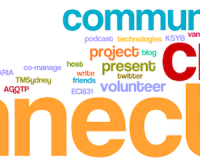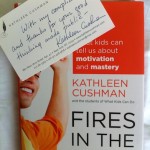
CC http://www.flickr.com/photos/sea-turtle/
On Twitter, global connections are common certainly between educators (think PLN) and increasingly between classrooms. Social media is making such connections possible and from most accounts, desirable.
At my school, however, the stance is still to be wary of the outside world. Connections via Video Conference are de rigueur but connecting widely through other means or even events are less common. Collegiality and social media (via Microsoft Sharepoint) are promoted within the school.
I questioned this…of course. My ‘conclusion’ is that the school has a point.
When I worked with an English teacher on a Blended learning approach (see related posts here and here), I was reminded yet again that learners have to feel safe for optimised learning. This doesn’t mean not taking risks but rather, perhaps in a Vygotskian Zone of Proximal Development fashion, the leap cannot be too far away from one’s comfort zone. The class didn’t want anyone else in until they were comfortable enough with blogging themselves. Their teacher also new to blogging but certainly keen, wanted an even smaller circle – just her and me.
I use Twitter and this blog for my professional networking. I use facebook mostly for family, nearly all are overseas. I’ve got another blog for my crafting hobby. I once set up a Weebly site to connect with my class parents. I’ve also got a few emails all serving different purposes. And yes, more than once I’ve seen these circles overlap and the separation sometimes does not make sense.
My point here is this. This is not a case of isolation vs. globalisation. Connection is a spectrum. Or maybe, a universe as spectrum sounds linear and connections and networking are far from linear. We need our own space as well as spaces we can comfortably share with the different circles we belong in, reflecting the relationships we have. There is logic in Google+ Circles and Posterous Spaces (and yes, I’ve got those too).
So then, it makes sense to have something just within the school. BUT, it also makes sense to connect more broadly and even globally. AND, it also makes sense to allow the individual student his/her space to call her own – the centre of a circle (Concentric circles of learning). All these must be facilitated and enabled.
As shown in the photo above, circles ripple out, connect and overlap, each with a middle. Foster communities, for sure but also foster the individual so the individual does not get lost in the sea of connections.
Does this make sense? What do you think?




